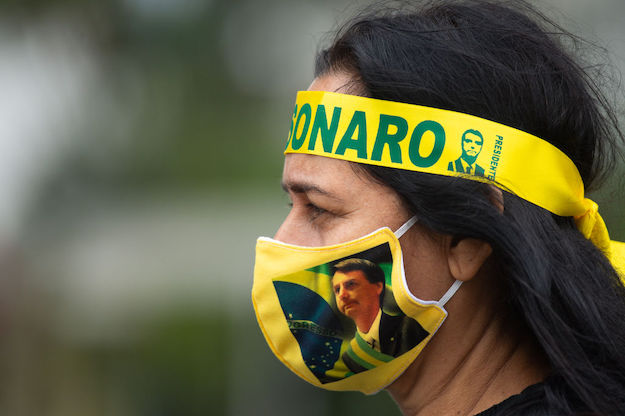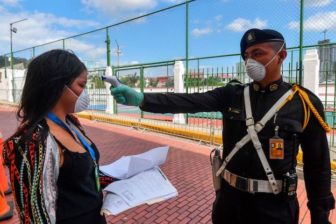BOGOTÁ – It’s often said that everything comes late to Latin America, but when things arrive they do so with a vengeance. Over the years that’s been true enough for cultural shifts, political trends and even economic crises. It also seems to be the case with COVID-19.
After passing through China, Europe and the United States, the coronavirus has its sight set south of the Rio Grande. The problem, as the New York Times recently suggested, is that Latin America’s options for dealing with the crisis are more limited than those of many of its global counterparts.
The region’s first response to the pandemic has been to impose strict isolation measures, even in cities and towns where there have not yet been any confirmed cases of infection. But no country in the region has the resources necessary to sustain a generalized quarantine for long. Indeed, few governments in the world can assume the luxury of indefinitely paying salaries and subsidies out of the public purse.
The other extreme is equally fraught. With limited hospital capacity and large high-risk populations, simply re-opening could quickly overwhelm health systems. Chile is a case in point. Officials in Santiago were recently forced to reverse course after the relaxation of some isolation measures (and perhaps excessive optimism) led to a spike in cases. La Tercera reported last week that over 90% of ICU units in the city were occupied. In São Paulo, home to the best hospital infrastructure in Latin America, 85% of ICUs are occupied.
The alternative to these two options is to operate in a grey area that is less bad than the extremes, but that requires a great deal of information and agility in decision-making. This is the most demanding course that governments can take, but it is the right one.
In this intermediate scenario, testing capacity and tracing programs become a priority, and high-risk populations need to be isolated. Given overcrowding in slums and favelas in many Latin American cities, separating older adults from the rest of their families is not an easy task. But it is necessary in order for their family members to gradually leave their homes to work or study.
For an intermediate scenario to work, the criteria used to decide when and where to re-open needs to change. Rather than thinking by sector, governments should re-open by city, region or occupation. Administrative workers, in any sector, should be able to work remotely, for example. In cities such as Curitiba, Medellín or Monterrey where the pandemic is relatively under control, there could be a return to something approaching normality, but only so long as these areas have minimal – not to say zero – contact with the outside world. Residents of these cities would need to get used to living on a sort of island, where they are not confined within their homes but rather within the city limits.
In the region’s largest cities, and others such as Manaus where the virus isn’t yet under control, re-opening needs to be taken step-by-step – or perhaps drop-by-drop. Governments can start with jobs in which employees can work at a distance from one another, in multiple shifts and without relying too heavily on public transportation.
This degree of uncertainty suggests that Latin America’s contest with the coronavirus is still only in the top of the second inning. As such, governments should not yet put all of their cards on the table when it comes to fiscal and policy responses to the virus. More stimulus will be needed, but if governments offer additional fiscal space today, while numerous sectors of the economy are still under immense financial pressure, that space will be immediately filled up. Governments need to keep a few tricks up their sleeves.
That doesn’t mean that additional steps are not needed to deal with the virus in the immediate term. Self-employed workers in high-risk sectors should be a priority. Many of those who work without a regular salary, even if they were making ends meet before the pandemic, could quickly slip into poverty as isolation measures persist. There are also many businesses for which newly available lines of credit don’t offer much of a solution. That goes for millions of Latin Americans who work in barbershops or salons, or the millions of cooks and waiters who work in the informal economy. Without support programs, these groups will continue to work no matter what authorities suggest. Market forces can quickly push a grey-area coronavirus response to the extremes.
It is still too early to talk about the day after the pandemic. But we do know something about how the economy will look in the next year or so. There will still be people who can’t or won’t leave their homes, thousands of businesses operating at half speed, and consumers who will be cautious given the high uncertainty about their economic prospects. All of them will need government support, and not just for a few months. There will also be a period of time in which connections abroad are harder to maintain. International flights will be limited, quarantines in destination countries will stop new arrivals, consular offices will close and, in some cases, nationals from some countries could be barred from entering others entirely. Indeed, Latin America needs to be prepared for more protectionism. While in advanced economies they’ll talk about the need to reshore jobs and reduce dependence on international supply chains, proposals in the region will aim to ensure self-sufficiency in everything from food to energy as a matter of national security.
The fiscal outlook is also bleak. The managing director of the IMF recently said that governments should “spend everything they can, but keep the receipts.” Soon enough, bills will come due. Debt in Latin American countries is going to rise, setting the stage for future adjustment. Governments should consider base zero budgets for 2021. It’s a good opportunity to leave unnecessary spending behind. After all, it may be impossible to undo the programs now being implemented in response to the pandemic. Cash transfers to vulnerable families will be difficult to reverse. It’s worth remembering too that the second half of 2019 was a period of widespread social protest. Discontent hasn’t disappeared – it’s just hibernating. That means that the fiscal challenge is even greater than it seems.
All of this will have a significant impact on elections throughout the region. There will be support for those who say, “let’s forget about the problems we’ve inherited, it’s impossible to pay the debt, we need to change the model.” Then there will be those in the center who try to resolve these problems with pragmatism and responsibility. Countries that don’t yet have populist governments will be in danger of acquiring them. Leaders on the edge of demagogy could run further off course. If moderate forces do not unite, populism will be difficult to defeat.
Unfortunately, centrist positions can be mistaken as a lack of resolve. But it is precisely in the center where difficult decisions are made, where leaders need to strike a balance between social progress and a business-friendly development strategy. Governing from the center can be harder, but it has never been so important.
—
Cárdenas is a former Colombian finance minister and currently a Visiting Senior Research Scholar at Columbia University’s Center on Global Energy Policy.









